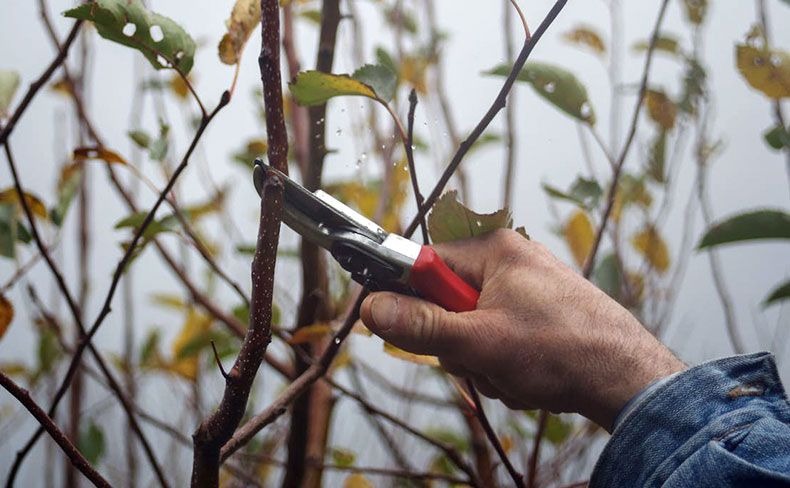While winter covers the landscape with serene silence, the notion of gardening can seem dormant. But winter provides an ideal opportunity for a crucial task-pruning. Winter pruning is more than just tidying up; it’s a strategic approach to promoting the health and vitality of your trees and shrubs.
In this guide we will explain why, when and how to do winter pruning, ensuring that your garden emerges in the spring with robust, well-formed and thriving plants.
Why winter pruning?
Dormancy Advantage
During the winter, many trees and shrubs are in a dormant state, which means that they do not actively grow. Pruning during this period minimizes stress on plants, as they can allocate resources for wound healing without the requirements of new growth.
health issue prevention
Winter pruning helps to remove dead or health issued branches, thereby reducing the peril of spreading pathogens during the growing season. This is a proactive measure to maintain the overall health of plants.
Shape and structure
Without the distraction of leaves, the underlying structure of trees and shrubs becomes more noticeable in winter. Pruning during this period allows for a clearer view, facilitating strategic cuts to improve shape and shape.

When to prune in winter?
End of winter
Aim for the end of winter, just before the start of the active growth phase in the spring. This moment strikes a balance between allowing the plant to be completely dormant and ensuring that the wounds heal quickly once growth resumes.
Avoid extreme cold
Try to plan pruning during milder winter days to avoid extreme cold. Extremely cold temperatures can cause additional stress to pruned plants.
How to prune in winter?
Clean cuts
Always use sharp and clean pruning tools to make precise cuts. Torn or torn cuts can be an entry point for health issues.
Remove dead or health issued branches
Start by removing dead, damaged or health issued branches. Cut into healthy wood, just beyond the point of damage.

Dilution by air flow
Thin out crowded branches to improve air circulation through the canopy. This reduces the peril of fungal health issues and allows more sunlight to reach the inner parts of the plant.
Shape and structure
Prune by shape and structure, focusing on eliminating crossed or rubbed branches. This improves the natural shape of the plant and prevents future problems.
Height management
If your trees or shrubs have grown taller than desired, winter is an excellent time to reduce their height. Focus on cutting the side branches or buds.
Pruning of conifers
Be careful when pruning conifers in winter. Although dead or health issued branches can be removed, it is often preferable to leave the main form in early spring.
Winter pruning is a proactive step towards maintaining the health, shape and vigor of the trees and shrubs in your garden. By adopting this strategic practice, you are setting the stage for a lush and vibrant garden in spring. Pack up, sharpen those secateurs, and let the winter pruning begin-your garden will thank you with thriving exposure in the coming seasons.

Improving winter pruning with the garden save
As you embark on your winter pruning adventure, consider harnessing the power of technology to optimize your efforts. The Garden Savv H Hortisketch Garden Planner, an integral feature of our gardening toolkit, offers a dynamic growth calendar that serves as a personalized guide. This innovative tool takes the guesswork out of pruning schedules by providing personalized recommendations based on climate and specific plant varieties.
Hortisketch analyzes local weather conditions, plant dormancy periods and optimal growth phases, allowing you to identify ideal times for winter pruning. The seamless integration of technology into your pruning practices ensures that every cut is done accurately, improving the overall health and resilience of your garden.
Explore Hortisketch’s intuitive interface to align your pruning efforts with the natural rhythms of your garden, thus promoting a landscape that thrives year-round.
